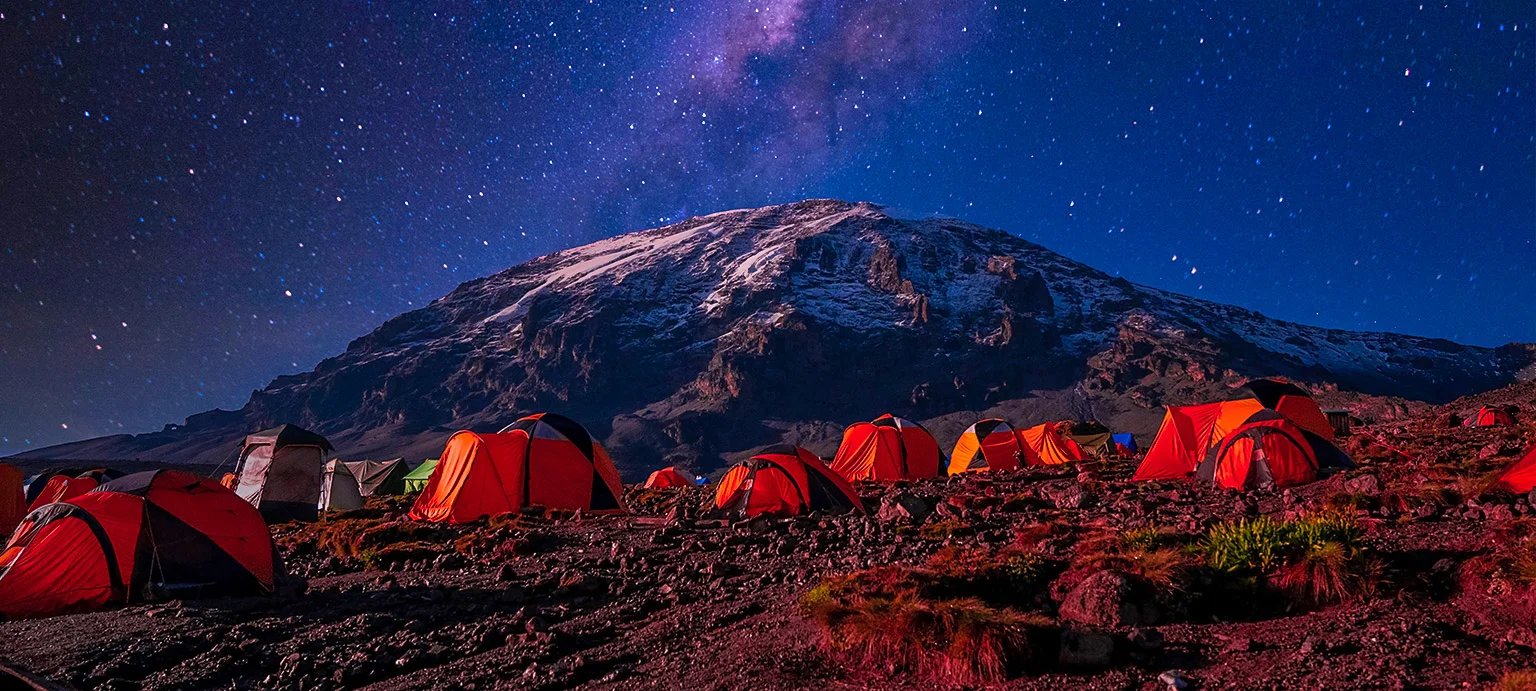The best time to visit Tanzania to hike on Mount Kilimanjaro is during dry season. These are characterized by low precipitation and warm weather conditions. The dry seasons on Mount Kilimanjaro occur during the months of early December to early March, and from late June to late October. During these periods, the trails are relatively drier and more accessible compared to the wet seasons. This is the peak tourist season with the second dry season coinciding with the summer seasons in the US and Europe. Still, Mount Kilimanjaro can be hiked throughout the year depending on the traveller’s choice of weather, budget and the need for ambience.
For travellers desiring more challenging trails, we recommend that you visit Mount Kilimanjaro during the wet seasons. These fall in the months of March to May and from October to November. During the short rainy season in November, weather conditions are unpredictable and afternoon rains are quite common. Conversely, the long rainy season of late March to mid-June is the most challenging of all and only recommended to the most hardcore mountaineers. During this time, the trails are muddy and slippery, with relatively lower visibility for photography due to the misty conditions.
Mount Kilimanjaro Trekking Routes
Mount. Kilimanjaro in northeastern Tanzania, near the Kenyan border is 5,895 meters above sea level, making it the highest point in the African continent. There are seven main trekking routes that can be followed by up to 60 hikers per day as they embark on their quest to conquer this natural wonder to reach the summit. These are,
The Marangu Route; is about 82 kilometers long and visitors can hike for five days and four nights. Most times, a visitor is recommended to have an extra night to acclimatize to the local weather conditions thus making it six days of nonstop adventures. At the start, the altitude is 1,843 meters and visitors have an opportunity to spend their nights in huts instead of camping.
The Machame Route; is about 62 kilometers long where hikers experience a gradual ascent with often a six-to-seven-day return. The highlight of this route is the enjoyable contouring of the southern slopes before reaching the summit via the Mweka route. The Machame route starts at 1,830 meters and visitors can enjoy camping in various places as they ascend.
The Umbwe Route; this is about 53 kilometers long and is among the toughest routes on the Mount Kilimanjaro because it is steeper. Hikers can take at least 6 days to complete their hiking adventure. The route starts at 1,600 meters at the Umbwe gate and hikers can enjoy camping at various points as they climb. Acclimatization is necessary because of the snow on that part.
The Rongai Route; is about 70 kilometers long and takes at least 6 or 7 days to trek, starting from the Kenyan border. This is a relatively steady climb of the Mount Kilimanjaro and additionally has the advantage of ensuring that the hikers acclimatize as they trek. This route starts at an elevation of around 1,950 meters above sea level.
The Shira Plateau Route; is about 56 kilometers long and is among the least used trails on the Mount Kilimanjaro. A day for acclimatization is required since the adventure starts at an elevation of around 3,600 meters above sea level at the Shira track trailhead. Visitors can enjoy 6 to 8 days of hiking on this route, while camping in different huts.
The Lemosho Route; is about 70 kilometers long on the western side of Mount Kilimanjaro with the most beautiful scenery. This is a 7 to 8 days adventure that starts at elevations of over 5,000 meters above sea level. Visitors can enjoy crossing the Shira Plateau with an added advantage of low crowds for more intimate adventure.
The Northern Circuit Route; this is the longest route that is about 98 kilometers long, requiring 8 to 10 days to complete successfully. Besides crossing the Shira Plateau, hikers on this route can experience views of the Kibo Peak and the Uhuru summit enroute. With little to no hikers, visitors can have more intimate solo travels and peaceful camping experiences.
Packing for Mount. Kilimanjaro Hiking Tour
To have an extraordinary hiking trip on Mount Kilimanjaro, every traveller must ensure that they pack essential items needed for the various weather conditions on the mountain. These items include,
- Trekking boots to move on rugged terrain and gaiters to ensure that your trousers are kept clean even in wet environments
- Long-sleeved hiking shirts, hiking pants and pairs of hiking trousers. These ensure that you avoid insect bites and friction of your skin and soils and vegetation
- Insulated winter jacket to cater for the snowy and wet conditions
- Scarf or neck gaiter to insulate your neck from losing to much heat
- A sun hat to protect your head from the daytime direct sunrays. Sunglasses are also handy to protect your eyes from ultraviolet sun rays
- Insulated jacket or fleece, warm gloves, sleeping bag and socks
- A warm beanie to insulate your head and ears from the freezing temperatures
- A headlamp is necessary for any night activity such as heading to the toilet and others
- A small backpack to carry portable essential items like water bottles, torches, binoculars, snacks, lip balm, sunscreen, wet wipes, chargers and camera among others
- Trekking poles / sticks

